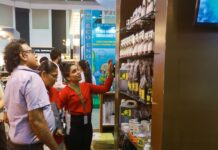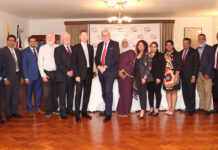Sri Lanka tends to rank low in terms of insurance penetration compared to the rest of the region, with insurance premium amounting to little over 1% (2019) of the Country’s GDP whereas the average in other countries in the region are around 3% to 4%. One of the main reasons behind this is the low GDP per capita in the country (below 4,000 USD) which essentially means that not many Sri Lankans carry the required disposable income to protect themselves and cannot afford a level of insurance protection that they should have.
Another very significant reason for the low level of penetration stems from the cost for insurance companies to reach the masses, where the premiums generated cannot sustain the selling costs of the traditional sales channels and thus a significant proportion of the population remain underserved in terms of being able to full fill their insurance needs.
In such a scenario, one should appreciate the efforts taken by reputed Corporates representing two well regulated industries who have come together to offer affordable insurance products to the masses and to the less privileged at grassroots levels in our country.
Through these insurance schemes, thousands of customers have benefited immensely at the time of bereavements, injuries or hospitalizations. If not for these products made available at a very low cost, these customers would have never obtained an insurance cover and would have never benefitted from the compensation they have received.
The role of mobile insurance
In this context, mobile insurance has enabled financial inclusion for over a decade, giving people access to affordable, transparent insurance solutions and necessary tools to better manage their financial lives. Undoubtedly, mobile has succeeded in introducing millions of people to insurance and widening their access to a diverse range of insurance products. The popularity of these solutions can be attributed to the convenience and ease of using mobile to enroll and pay for insurance, and make claims and receive claim payments.
It is estimated that over 2 million customers have been served through mobile insurance which is nearly 10% of the country’s population. It is also estimated that nearly Rs. 1 billion has been paid in claims and if not for the mobile insurance platform these customers would never have had the opportunity of accessing these products and benefiting from the compensation paid.
With over 30 million mobile connections by 2020, versus a population of 21 million, there is a significant market opportunity for Sri Lanka to leverage mobile to leapfrog traditional models by helping to protect the under-insured and offer a range of affordable insurance products be it from the Life or General insurance segments. The traditional distribution segments of individual advisors, brokers etc cannot access this market in a meaningful manner whilst also ensuring that premiums are very small and affordable.
Taking the lead in Sri Lanka
Today, we are seeing that local insurers are realizing the importance of mobile insurance and the impact it could bring for millions of low-income earners in the country. A number of Insurers have understood this significant gap and have established themselves on such a platform.
Technology has enabled simplicity and cost-effectiveness of on-boarding customers onto the platform. These customers would otherwise not have been able to access insurance solutions that were previously only distributed traditionally. Mobile Insurance has disrupted the industry by eliminating a huge portion of the operational costs involved in the traditional insurance process and passing that cost-benefit directly to the customer.
When the whole world is moving towards technology-based transactions and services, this is an ideal platform through which to introduce insurance products to the masses. Promoting insurance through digitalized schemes is encouraged even in well developed markets and is fast becoming popular in developing countries and emerging markets, when the government of Sri Lanka is driving the country towards high tech and digitalized products and services, this could be considered an extremely successful and a smoothly run model operation for such projects.
The vision of the President is to take development to the rural communities through various programs such as ‘Gama Samaga Pilisandara’ to uplift the lives of rural communities. Hence, all encouragement should be given to such schemes that offer benefits to these clients rather than hampering such efforts.
The insurance regulatory authority of Sri Lanka (IRCSL) has adopted a very progressive outlook and supported the industry to innovate and push the boundaries of the traditional business models by providing an enabling environment for the industry. This is much appreciated. The industry has responded positively to this and we urge the authorities to continue to take further progressive steps in order to achieve a higher level of insurance penetration in Sri Lanka.
In Conclusion
The growth of mobile communication-enabled insurance in recent years among developing countries injects a vital booster to Sri Lanka’s insurance industry. Furthermore, it seriously addresses barriers such as affordability, convenience and accessibility that people have when purchasing an insurance policy. The upsurge of mobile penetration lays a robust platform for the local industry to enable the lower-income segment to afford a wide range on insurance products.
The insurance industry has always been a very dependable and solid protector of the nation at all times of National crises stepping up to play its expected role when needed. The industry has done its utmost to build trust and confidence amongst the population by providing invaluable resources over the decades. As an industry that prides itself in being professionally managed, it will change and adapt to achieve higher standards.
The Insurance Association of Sri Lanka, as the official body representing all insurance companies, is of the view that an enabling environment must be created that is progressive that facilitates innovation of products and delivery channels with the end objective of serving the insurance needs of the entire nation and not only of those who can afford it through which the level of insurance penetration can be increased above the present 1% levels to regional levels of around 3% to 4%.












